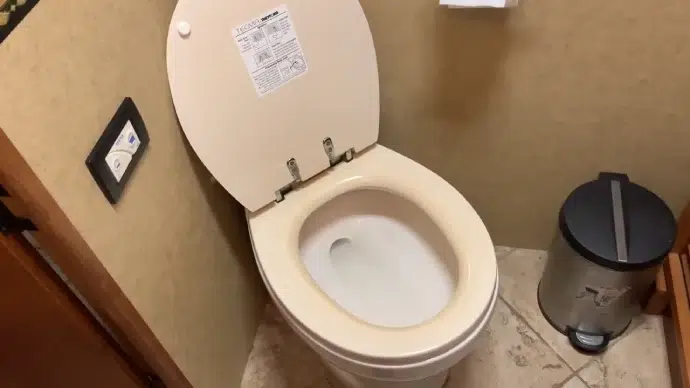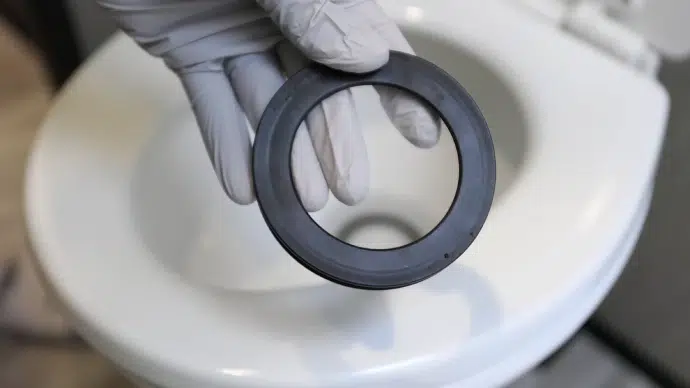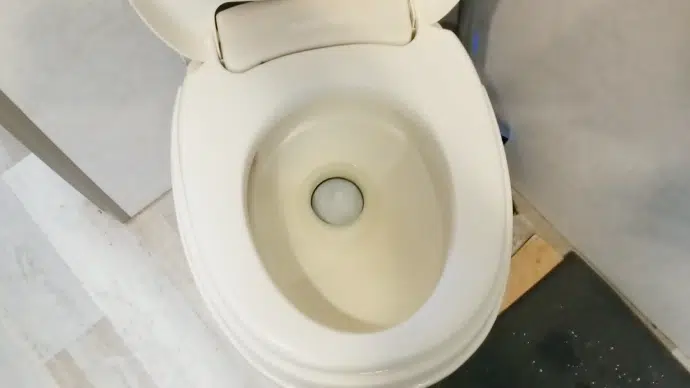Last Updated on April 20, 2023
If you’re an RV owner, you know how important having a functional toilet is. After all, nobody wants to be stuck without a place to do business while on the road.
What happens when your electric toilet suddenly stops flushing? It can be frustrating and confusing to troubleshoot the issue. The source of this inconvenience could come from various factors, such as electrical problems or blockages in the system, issues with a water supply, and damaged components.
Avoid future issues with your RV electric toilet by regular cleaning and sanitizing your toilet system using appropriate RV-safe toilet paper and chemicals. With this, you’ll surely enjoy a hassle-free experience on your next adventure.
Don’t let a malfunctioning toilet ruin your trip. Uncover the mystery behind your RV electric toilet’s lack of flushing power with us.
Why Is My RV Electric Toilet Not Flushing: Common Causes
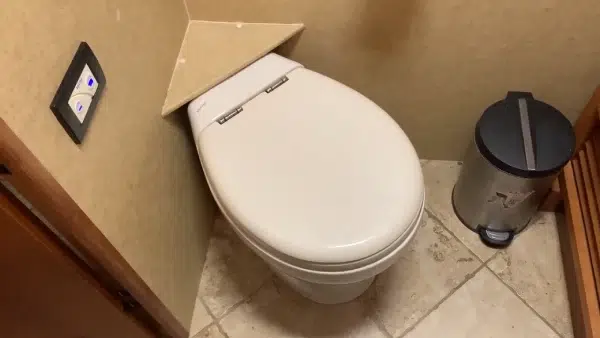
When it comes to RV electric toilets, there are several common causes of malfunction that you should be aware of. These issues can range from electrical problems to blockages in the system, and they can be frustrating to deal with. Here are some of the most common causes of RV electric toilet malfunction:
1. Electrical Issues:
If you’re experiencing issues with your RV electric toilet not flushing, one of the most common causes could be electrical problems. These issues can range from a blown-fuse to a malfunctioning switch or motor.
Another potential cause of electrical issues with your RV electric toilet is low battery power. If your RV’s battery is running low, it may not have enough power to operate the toilet’s electric components properly.
2. Blockages or Clogs in the System:
RV electric toilets may not be flushing due to blockages or clogs in the system. Blockages can occur anywhere along the toilet’s plumbing, from the bowl to the holding tank.
A variety of things can cause these blockages. It includes too much toilet paper being flushed at once, foreign objects being flushed down the toilet, or even mineral buildup inside the pipes.
3. Problems with the Flush Pedal or Button:
If you’re experiencing issues with the flush pedal or button on your RV electric toilet, there are a few potential causes to consider.
First, the pedal or button itself may be damaged or broken. Over time, these components can wear down or become stuck, preventing them from properly activating the toilet’s flush mechanism.
Another possibility is an issue with the wiring connecting the pedal or button to the rest of the toilet system. If this wiring becomes frayed, corroded, or otherwise damaged, it can prevent signals from being transmitted properly and cause problems with flushing.
4. Issues with the Water Supply:
The water supply is an essential component of any RV electric toilet system. Without adequate water flow, the toilet will not function properly. One common issue with the water supply is low pressure or a lack of water altogether.
Low pressure can be caused by different factors, including a clogged or damaged water filter, a kinked hose, or a malfunctioning pump.
In some cases, insufficient water may be available for the toilet to function properly. This can happen if you are camping in an area with limited access to fresh water or if multiple people use the same supply.
Another potential issue with the water supply is contamination. If your RV’s fresh water tank becomes contaminated with bacteria or other harmful substances, it can quickly spread throughout your entire plumbing system and cause serious health problems.
5. Damaged Components:
One possible cause of RV electric toilets not flushing could be damaged components. This can include broken or worn-out parts such as valves, seals, or pumps. One way to identify if there are damaged components is by thoroughly inspecting the toilet system.
It is also important to ensure that all components are properly installed and aligned. Misaligned parts can cause strain on other components and lead to further damage over time.
Troubleshooting Your RV Electric Toilet Not Flushing
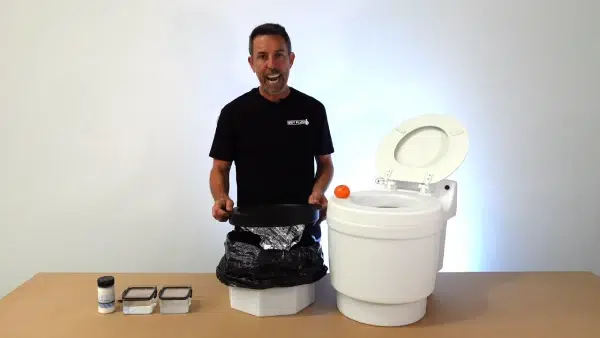
Experience RV toilet trouble? We have a few easy tips to help identify and resolve your electric flushing system issue.
1. Check Electrical Connections and Fuses:
To troubleshoot an RV electric toilet that is not flushing, it’s important first to check the electrical connections and fuses. Electrical issues are a common cause of malfunction in these types of toilets.
Start by checking the power source for your toilet. Make sure it is properly connected and receiving power. Check the circuit breaker or fuse box to ensure no blown fuses or tripped breakers.
Next, inspect the wiring and connections for any signs of damage or wear. Look for loose wires, frayed insulation, or corroded connections that could be causing a short circuit.
Check the fuses to see if everything appears in order with the electrical connections. Locate the fuse panel for your toilet system and check each to ensure it is intact and functioning properly.
Whenever you find a blown-fuse, replace it with a new one. If you’re unsure about how to do this safely, consult your RV owner’s manual or contact a professional technician for assistance.
2. Inspect for Blockages or Clogs
When inspecting for blockages or clogs, it’s important to start with the basics. Check the black water tank to ensure it’s not full and causing a backup in the system. If that’s not the issue, examine the toilet itself.
One way to check for blockages is to use a plumbing snake or auger to clear any obstructions in the pipes leading from the toilet to the black water tank. Another option is to use a plunger specifically designed for RV toilets, which can help dislodge any debris causing a blockage.
3. Examine the Flush Pedal or Button:
You can check this by examining the wiring that connects the pedal/button to the rest of the system. Make sure all connections are secure and tighten any loose wires.
Another issue could be a faulty switch. This can happen over time due to wear and tear or exposure to moisture. In this case, you may need to replace the switch entirely.
Sometimes debris can accumulate around the pedal or button, preventing it from functioning properly. If this is the case, simply remove any visible blockages and try flushing again.
4. Verify the Water Supply is Adequate:
To verify if your RV’s water supply is adequate, check the water level in the toilet tank. If it’s low, try filling it with more water and see if it improves the flushing performance.
You should check the water pressure in your RV’s plumbing system to ensure it meets the manufacturer’s recommendations.
5. Assess Any Damaged Components:
To assess for damaged components, start by visually inspecting the toilet system for any visible signs of wear and tear. Check for cracks or leaks in the bowl, pipes, and other components. If you notice any damage, it’s best to consult a professional for repairs.
When replacing any damaged parts of your RV electric toilet, choose high-quality parts compatible with your specific model. Consult your owner’s manual or a professional technician to guide selecting the right parts.
Maintenance Tips to Avoid Future RV Electric Toilet Issues
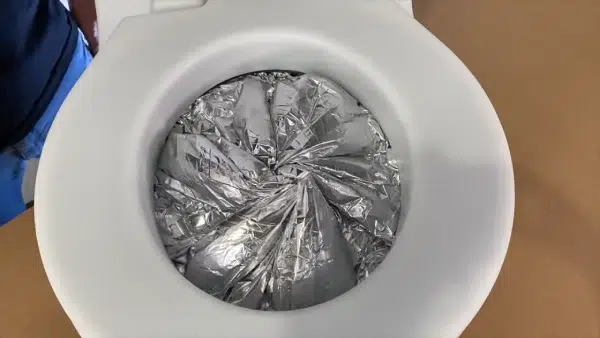
Regular maintenance is key to ensuring your RV electric toilet functions properly and avoids any future issues. Here are some maintenance tips to keep in mind:
1. Regularly Clean and Sanitize Your Toilet System:
It’s important to clean your RV electric toilet regularly to prevent any buildup or blockages that can cause malfunctions. Use a specialized RV toilet cleaner and follow the manufacturer’s instructions for the best results. Additionally, sanitize the system at least once a month to keep it hygienic.
2. Use RV Safe Toilet Paper and Chemicals:
Not all toilet paper and chemicals are suitable for RV electric toilets. Ensure to use products specifically designed for this type of system, as regular household items can cause clogs or damage.
3. Be Mindful of What You Flush Down Your Toilet:
Only flush human waste and RV-safe toilet paper down your electric toilet. Avoid flushing anything else, such as feminine hygiene products, baby wipes, or food scraps, as these can cause blockages or damage.
How do I know if my RV toilet is clogged?
If your RV toilet isn’t flushing or draining properly, it could be clogged. Generally speaking, this is caused by compacted waste such as food particles, paper towels, and other materials caught in the trapway of your toilet bowl.
Another sign of a clog is when you flush and hear gurgling noises from your drain pipes or toilet tank. If you have checked all other potential causes but are still experiencing issues, professional help may be needed to clear any blockage safely and effectively.
Does electricity affect toilet flushing?
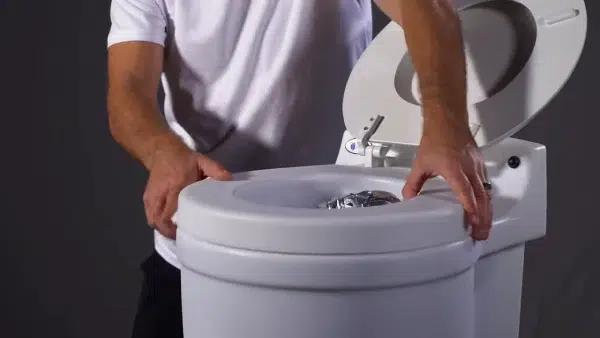
Electricity has no direct effect on how well your toilet flushes. Most modern toilets use gravity-based systems, which are not reliant on electricity to function properly. When the power goes out, they can still flush waste away as long as there is the sufficient water pressure in your plumbing system.
It’s important to note that some electronic components, such as sensors or motors used for automatic flushing, can become affected by power outages. So these should be checked or replaced once power has been restored.
Can you pour water into a toilet to make it flush?
Pouring water into the toilet bowl can help make the toilet flush. This is because the force of the water entering the bowl helps dislodge any blockages. It creates enough pressure to push waste out of the holding tank and through the pipes.
Simply fill a bucket with clean water and pour it directly into the toilet bowl. It is important to use clean water since this will help prevent any contamination from occurring in your plumbing system. You can consider adding some dishwashing liquid to boost cleaning power.
Fix a Malfunctioning RV Electric Toilet to Get You Flushing Again
A malfunctioning RV electric toilet can be quite frustrating, especially when on the open road. However, it’s important to understand that not flushing issues can be caused by several factors, from electrical problems to damaged components.
To troubleshoot your RV electric toilet, it’s essential to check for electrical connections and fuses. You should also inspect for blockages or clogs, examine the flush pedal or button, verify the water supply is adequate, and assess any damaged components.

